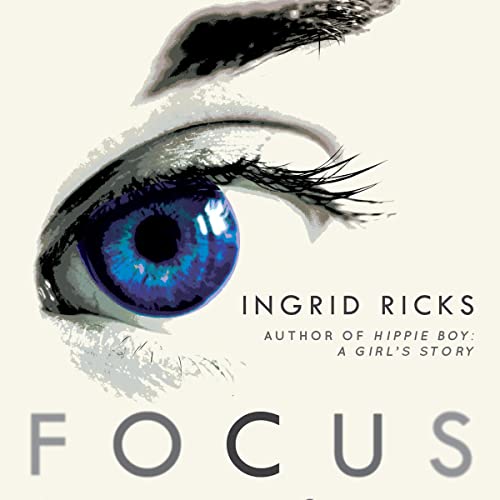For those of you who missed this story, Steve Fialkoff, a 68-year-old New Yorker with the Usher 2A RP mutation, stumbled on a combo of curcumin, black pepper and ginger last February that started giving him back bits of eyesight.
Determined to spread the word about his discovery, the video-editor-turned-playwright who should also consider a career as a comedian, reported his vision gains to a retinal specialist, who immediately dismissed his curcumin, black pepper & ginger claims. Undeterred by her lack of enthusiasm, he shared his news with Foundation Fighting Blindness, and was told that extensive research would be required to determined if his experience with curcumin and ginger was more than a fluke. So Steve took what he saw as the only logical next step: launching his own, informal Curcumin RP study – which he named I SPICE (Improving Sight Project Investigating Curcumin Experiment).
Steve’s ever-growing I SPICE group currently consists of 56 RP participants who are all experimenting with different combos of curcumin, black pepper and ginger. And the first survey results – tallied over Thanksgiving weekend – indicate that curcumin with ginger does indeed improve RP eyesight.
Of the thirty participants who took part in the survey, fifteen reported vision improvements. Some report expanded visual fields. Others have seen a jump in visual acuity and color. A couple have even received a boost in their night vision. Not everyone has experienced vision gains. My curcumin experiment has so far only yielded occasional, inconsistent increases in visual acuity. But I am excited about the results because they span several RP mutations — something that has now caught the attention of FFB. According to Steve, the foundation is now considering a curcumin RP study. In the meantime, Steve is tracking a curcumin macular degeneration study being conducted by the University of Illinois. Based on the positive results of a research study utilizing the amino acid N-Acetyl Cysteine (NAC) for RP treatment, some of us I SPICE participants are also starting to add it into the experiment mix.
It’s been so empowering to be on this journey with Steve and the other RP participants and if you are interested, we would love to have you join. The more data we can collect and information we can share – the closer we all are to seeing our world. To join the I SPICE experiment, email Steve at: tinymustacheprods@gmail.com.
And to get a sense for Steve and the amazing work he is doing on our behalf, check out his December 8 e-bulletin, which I’ve pasted below.
I SPICE NEWSLETTER #12
Dec. 8, 2022
Improving Sight Project
Investigating Curcumin Experiment
Topics:
1) New reports
2) FFB on the case
3) New experimenters
1) New Reports:
A recent Curcumin experimenter with 99% vision loss with a recessive FAM gene type reports her latest doctor eye exam from Wills eye institute.
Her last check was two years ago.
She saw the first two lines of the Snellen chart. Big E, and the next line. She was told she had 20-400 vision. Also, she scored correctly on identifying black and white squares with her bad eye. Ok, so? It doesn’t sound so great. Well, she didn’t have any vision to measure two years ago. What was the eye doctor’s response to this test finding?:
“You must have had a bad day two years ago. I doubt Curcumin is responsible for these test results…”
To quote my own dialogue line from a play I wrote:
“Doctors Schmocktors!”
The same woman reports visiting her friend and seeing her new bangs on her forehead when she turned her head into he sunbeam coming in from the window.
What I love about this report is the modesty and uncertainty about her own improvement.
“Maybe it’s my imagination and I could see this stuff all along but just now hyper aware of any object in view” She told me over the phone.
Ok, let’s give it another month and see what happens.
She is also starting to take N-Acetyl Cysteine.
Which leads us to a second report from Me.
I haven’t noticed any big improvements since October, ’22.
But after having, coincidentally, blended ginger strips in my lentil soup, my left eye seems to be seeing more, enabling it to lock with my right eye for longer periods of time especially in daylight when there is more light out there. Less double vision means a wider tunnel to view the world through. I also take 1 gram of N-Acetyl Cysteine a day along with the Curcumin. (I don’t know if NAC increases anti-coagulation but I will check on that.) The NAC is about a month into my regimen.
Ok, it’s only been 3 days of this increased field but it is strange that it happened after eating ginger in lentil soup meal.
(yes, there was black pepper, garlic, olive oil, butter, salt, shallots in the flavorings well)
Was it good?
Eh, it was very hearty.
Does it make a lot of gas?
NAC + lentils = gas
NAC + anything= gas
2) FFB on the case:
The word from the FFB is encouraging. Since twenty more people could have potentially reported but didn’t… our data sample was relatively tiny.
Very hard to spot a pattern or trend in such little data.
But, I believe the data shows that Curcumin doesn’t care which gene you have mutated. Recessive forms may respond better. USH2A seems to respond favorably. (I have that one, which is supposed to be the most common form of RP)
Too early to tell is the word but I believe that Autosomal dominant P23 H rhodopsin type isn’t the only RP to benefit from a possible Curcumin therapy.
All in all the fact that 15 out of 30 reports were positive improvement, is pretty compelling info.
Additionally,
I am awaiting safety and efficacy results from Univ. of Illinois at Chicago trial of curcumin on Macular degeneration.
I believe, if no adverse effects are found, then creating a human trial with curcumin and RP will be a no brainer.
We shall see.
3) New experimenters:
There are two new experimenters as of last week. The word is spreading albeit, slowly. Both of them have Ushers with hearing loss and RP.
Will Curcumin help hearing and seeing? Perhaps we can help two verbs with one pill?
Oh, that was terrible, steve!
Anyway, I hope to be hearing from people who just started at the end of October.
Keep in touch.
Avoid the flu.
Curcumin is derived mostly from turmeric root a member of the ginger family, which includes Black pepper.
I use fresh ground black peppercorns, fresh sliced and peeled ginger root cooked in olive oil or butter or ghee or coconut oil.
My calculations show 1/5 of a teaspoon of ground black pepper supposedly contains enough Piperine to activate curcumin in the blood stream.
Or just take it in your favorite brand’s capsule. I don’t have an amount for ginger either. I just use a coin sized slice per day, after it’s been cooked.
I don’t know if sugared and brined ginger from the Sushi bar works. I also cannot say that it doesn’t work either.
Nobody said this was going to be easy.
Disclaimers:
Steve NYC
1- there is no proof in the literature that Curcumin will help humans with RP.
2- there are no human safety trials for RP people using Curcumin supplements
3- I am not a doctor
4- Curcumin at certain levels may interact with other medications you may be taking. Large amounts may cause bleeding. Consult a doctor.
5- I do not know what these levels are.
6- Consult a medical professional before starting on any therapy
7- According to the Italian researchers in the May 2021 review article linked below, there are some forms of RP that will not respond to Curcumin
8- Short term risks or benefits have not been established.
9- This is information and not medical advice.
10- I suggest you read the research on the NIH.gov site.
11- I do not sell Curcumin or NAC or work for any company that makes any supplement product. Therefore I do not have any monetary compensation from the sale of this substance.
12- I’m just a guy with RP for sixty-eight years.
The end.












